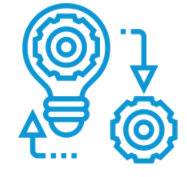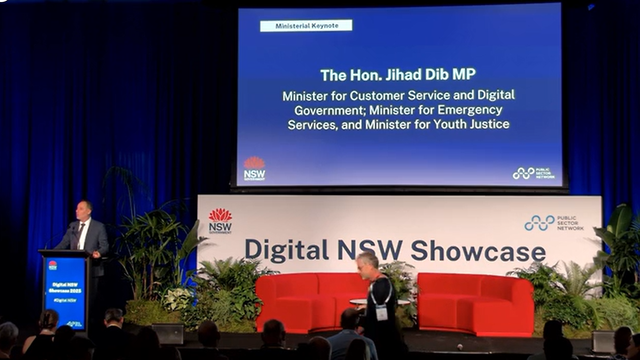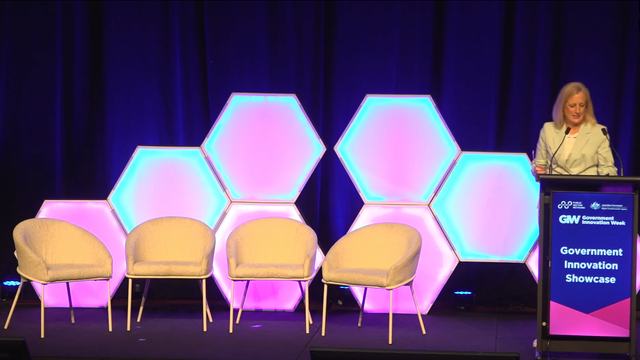Pivoting from the Transactional to the Value-Added by Scaling, Digitising and Maturing Public Sector Shared Services
Government Case Study: Modernising and Maturing Corporate
Shared Services to Drive Efficiency, Flexibility, and Add Strategic
Value

Lucy Hickman
GM Corporate Services,
Te Hiringa Hauora / Health Promotion Agency (NZ)
The need for change

Getting the basics right is the key to success for any organisation. Maintaining those basics is also important. For some, it means having an office in a central location, whilst for others, it means having the appropriate technology to support the work that the organisation does. Lucy Hickman, the General Manager of Corporate Services at Te Hiringa Hauora, New Zealand’s Health Promotion Agency , says that a range of factors led them to the realisation that “to stay relevant, we as an organisation had to make some changes.” In fact, “the business may not have survived if we didn’t transform.”
The agency itself was created in 2012 through a merger of other organisations, but by 2019, the founding CEO had resigned and things started to feel stale. “Often with a new CEO comes a bit of change,” and one of the first things that the new CEO implemented “was the first-ever employment engagement survey.” This also led to a new 10-year strategy, which was “endorsed by the board in March 2020.” Separate from that, other changes happened in the sector and across government at around the same time, and just before COVID-19 became the focus of everyone’s attention, it was clear that transformational change was necessary across the entire organisation. As it turned out, the pandemic sped up some of the processes, but “we’ve got a wider organisation-led transformational change project still in place.”
One of the most obvious catalysts for change, particularly in the corporate services area, was that “there was a lot of paper.” Everything was done on paper, and even if contracts or expenses were received electronically, “we were manually entering everything into the system, printing them out, stamping or signing them and then sending them around the office.” Sometimes contracts or other documents would sit on desks if people went away and thus “a lot of things got backlogged.” Things were also not properly recorded, and there were no systems of prioritisation. Moreover, “not everyone in the organisation had a laptop, so we weren’t able to work flexibly or from home.” And every desk also had a corded phone “that most people didn’t use.” From an organisational environment, “the technologies that we were using were out of date,” and “we also had two receptionists even though we are not a public facing agency.”
Pushback and feedback

Despite all that, especially before the pandemic, the general view of the staff was that “if it’s not broken, why would you need to fix it?” However, “that wasn’t necessarily our customer viewpoint,” and it was clear to some people that things weren’t quite working as they should. Some people also didn’t realise that “we’re not there to serve ourselves. We’re actually servicing the rest of the organisation to ensure that they have the right tools and information to be able to do their jobs.” Some in the corporate services team “didn’t know or understand who their customers are.” In fact, “we’d never asked our customers the value of the service we’re delivering.”
Part of the employee engagement survey included an opportunity in late 2019 “for us in the corporate services to actually talk with the organisation and get some feedback from them.” It was very important “to take the organisation on the journey with us.” The main questions were about the “current pain points” and what the vision of any change would look like. There were a number of sessions and the main themes of the challenges included: “things take too long; the delegations are too slow; everything is done manually; there is duplication of work; there’s too much paper; systems are archaic; some people create workarounds; there is a lack of trust; there are bottlenecks, and there must be a better way.” All of this was known anecdotally, but it was very good to hear these sentiments directly from the staff, and it was “the same feedback time and again.” Not only was the transformation designed to address these challenges, but “we also wanted to be more proactive and innovative, we wanted to add value and we wanted to provide better insights. Ultimately, we wanted the organisation to be able to make better decisions.”
The process of change

It was decided that change should happen incrementally, and those specific areas would be targeted one at a time so as not to make any of the changes feel overwhelming. One of the early changes was related to the delegations of the CEO. Until the start of 2020, every contract “over $20,000 was signed by the CEO, which was over 300 contracts a year.” Apart from just taking up too much time, it showed a lack of trust within the organisation. “So we increased the delegation to $100,000, which still gave him 80% of the value, but meant he only had to sign one or two contracts a week.”
The rest of the changes began as the pandemic hit, so “we decided not to make any changes for change’s sake.” Everything needed to reflect the reasons that were identified for the transformation in the first place and had to reflect the values of the organisation. As such, the HR team became the “People, Culture and Capability team, because that was the focus of what they were doing,” and “we hired a financial controller to deliver on the new systems that we were looking to implement. A new Te Tiriti (treaty) team was also created so that we could work as a treaty dynamic organisation.”
Many of the other changes were also intended to be incremental, but then COVID-19 hit and some of the transformation processes were forced upon the organisation. “Within days, everyone got a laptop and the majority of our staff continue to have a working from home arrangement.” When staff started coming back to the office, “the two receptionists were seconded to other permanent areas of the team,” and in general, some other consolidation also took place. If visitors arrive, “they’re now able to sign themselves in.” Also, in just a few days the organisation went from being “paper-based to doing everything via email with electronic signatures.” This extended to procurement and contracts, and “we’re phasing in the use of ‘DocuSign’. It was a pragmatic approach and we haven’t reverted back to our original processes. Eventually, this process will be used for all our HR documentation.” Ideally, the paper would be removed entirely and all the processes would be conducted electronically or virtually, but this isn’t a realistic approach. Technology had to be retro-fitted to the current processes, “but we weren’t able to find one solution for everything that we needed.” So different integrated technologies were implemented for different parts of the process, and “we’re now in the final stages of integration.”
As part of that, “we implemented a new cloud-based payroll system in May of last year.” It took six weeks to roll out, and not only is it a better business system but “it is also a better user experience. Staff is able to apply for leave through an app, and managers have much more insight into what’s happening from a payroll perspective.” The last part of the rollout included incorporating the system into the recruitment process, “reducing even more paperwork.” A lot of the technology rollout has been about “streamlining processes to free up our staff to be able to do the value-added services.”
Despite all the transformation, measuring success is difficult, especially since some of the changes were forced upon the organisation and are still ongoing. The only current measure is metrics. “In lockdown, we hardly printed at all, but it’s a sustained effort. We’ve reduced our paper usage by nearly a third, and our printing costs have reduced by more than half of what they used to be.” Because of the pandemic, travel costs also diminished, but it showed “that there are different ways of working.”
"We have come a long way, but we’ve also got a lot more to implement. We have become a digitally enabled team to ensure that we can provide the right insights and the right data for our organisation so that they can make better decisions and so that we can show our performance story as an agency."
Lucy Hickman
GM Corporate Services, Te Hiringa Hauora / Health Promotion Agency (NZ)



































